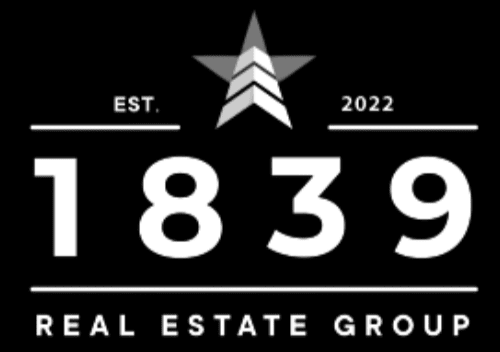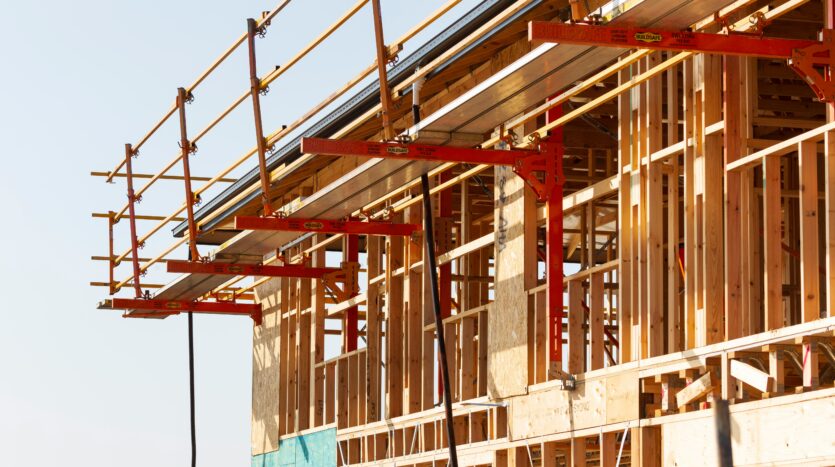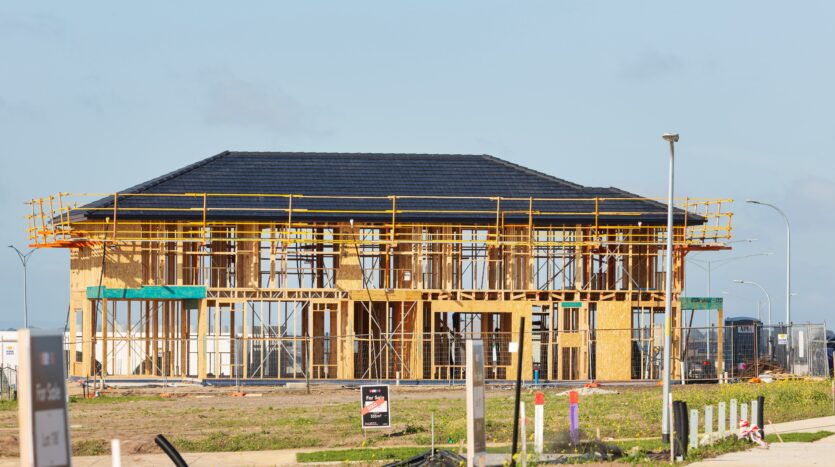The Investors Guide: How to Identify Prime Commercial Land for Sale
Understanding Land Development Opportunities
Trends in Residential Construction
In the realm of land investment, keeping a close eye on trends in residential construction is essential. As of June 2024, new residential construction has shown a positive trend. Privately-owned housing starts reached a seasonally adjusted annual rate of 1,353,000, marking a 3.0% increase from the revised May 2024 estimate (Census.gov). This uptick in housing starts indicates a growing demand for residential properties, which can significantly impact the value and desirability of commercial land.
| Month | Housing Starts (Seasonally Adjusted Annual Rate) | Percentage Change |
|---|---|---|
| May 2024 | 1,314,000 | – |
| June 2024 | 1,353,000 | +3.0% |
Understanding these trends can help investors identify prime locations for commercial land development. Areas with increasing residential construction often experience a rise in demand for commercial spaces such as retail, multifamily developments, and mixed-use properties. For more insights on multifamily land development, check out our article on multifamily land development: best practices and tips.
Business Formation Statistics
Another crucial factor in identifying prime commercial land is the rate of business formation. A rise in new business applications can signal economic growth and an increased need for commercial properties. In June 2024, the total U.S. business applications rose to 431,246, reflecting a 1.7% increase from May 2024 (Census.gov).
| Month | Business Applications | Percentage Change |
|---|---|---|
| May 2024 | 424,000 | – |
| June 2024 | 431,246 | +1.7% |
Regions experiencing a surge in business formations are likely to see a heightened demand for commercial real estate, including office spaces, industrial land, and retail locations. Investors should consider these statistics when evaluating potential land investments. To explore top areas for commercial development in Texas, visit our guide on top areas for commercial development in Texas.
By understanding trends in residential construction and business formation statistics, we can better identify [how to identify prime commercial land for sale]. These insights are crucial for making informed investment decisions and maximizing returns. For more detailed information, check out our articles on understanding zoning laws for commercial real estate and key factors to consider when purchasing commercial land.
Identifying Infrastructure Needs
When investing in land for commercial development, it is crucial to identify and assess the infrastructure needs. Understanding the availability and capacity of essential services can significantly impact the viability and profitability of a project.
Waterline Capacities and Wastewater Line Access
Assessing waterline capacities and wastewater line access is vital for ensuring that the land can support the intended development. Adequate water supply and efficient wastewater management are essential for commercial properties, including industrial and multifamily units. Investors should:
- Check the current capacity of nearby waterlines.
- Investigate the accessibility of wastewater lines.
- Explore potential solutions for areas lacking sufficient infrastructure.
Proper planning in this area can prevent costly delays and ensure a smooth development process.
Environmental Constraints
Understanding environmental constraints is essential for land development. These constraints can impact the feasibility and cost of a project. Key factors to consider include:
Wetlands and Zoning Overlays
Wetlands and zoning overlays can restrict development activities. It is crucial to:
- Identify any wetlands on the property.
- Understand local zoning overlays and their implications.
Unregistered Landfills and Erosion Zones
Unregistered landfills and erosion zones can pose significant risks. Investors should:
- Conduct thorough site investigations to identify any hidden landfills.
- Assess erosion zones and implement necessary mitigation measures.
Environmental Protections by Local Municipalities
Local municipalities may have additional environmental protections that impact development. It is important to:
- Research local environmental regulations.
- Plan for compliance with these protections to avoid legal issues and fines.
By addressing these environmental constraints early in the planning process, investors can mitigate risks and ensure a successful development project.
Market Insights for Land Investments
To make informed decisions on how to identify prime commercial land for sale, it is essential to analyze various market insights. This section will cover key reports and trends that can impact land investments, particularly in Austin and Texas.
Wholesale Inventories Report
Wholesale inventories provide valuable information about the supply chain and economic activity. As of May 2024, monthly wholesale inventories were reported at $901.7 billion, indicating a 0.6% increase from the previous month (Census.gov). This growth can signal economic stability and potential opportunities for commercial land investments.
| Month | Wholesale Inventories (in billion $) | Percentage Change |
|---|---|---|
| April 2024 | 896.1 | +0.6% |
| May 2024 | 901.7 | +0.6% |
Understanding wholesale inventories can help investors predict demand for commercial properties and infrastructure, making it easier to identify lucrative land investment opportunities in Austin.
Rental Vacancy Rate Analysis
The rental vacancy rate is another critical metric for assessing the health of the real estate market. In the 1st Quarter of 2024, the rental vacancy rate was 6.6%, remaining relatively stable compared to the same period in 2023 (Census.gov). A stable vacancy rate suggests a balanced rental market, which is favorable for commercial real estate investments.
| Quarter | Rental Vacancy Rate |
|---|---|
| Q1 2023 | 6.6% |
| Q1 2024 | 6.6% |
Investors should consider areas with stable or decreasing vacancy rates for projects such as multifamily land development and retail land investment strategies in Texas.
Homeownership Rate Trends
The homeownership rate provides insights into the residential real estate market, indirectly affecting commercial land investments. In the 1st Quarter of 2024, the homeownership rate was reported at 65.6%, unchanged from the same period in 2023 (Census.gov). A stable homeownership rate can indicate a steady demand for residential and commercial developments.
| Quarter | Homeownership Rate |
|---|---|
| Q1 2023 | 65.6% |
| Q1 2024 | 65.6% |
Stable homeownership rates can support the growth of mixed-use developments and other commercial projects. For more information on this topic, explore our guide on investing in industrial land in Austin and the benefits of mixed-use development in urban areas.
By keeping an eye on these market insights, investors can better navigate the commercial real estate landscape and make strategic decisions. For additional resources and expert tips, visit our articles on market trends for commercial land in Austin and key factors to consider when purchasing commercial land.
Analyzing Land Sales in Texas
As investors and business owners looking to purchase land and commercial properties for development in Austin and Texas, it’s crucial to understand the current landscape of land sales. This section provides an in-depth analysis of recent trends and market data to help you make informed decisions.
Texas Land Sales Overview
The fourth quarter of 2023 saw a significant shift in the Texas land market. Annual land sales volume slipped by 44.6% year-over-year, with a total of 279,509 acres changing hands, marking a 61.2% decline compared to 2022. Despite the drop in sales volume, prices rose by 5% to $4,670 per acre statewide from year-end 2022 through year-end 2023 (Texas Real Estate Research Center).
| Metric | Q4 2022 | Q4 2023 | Change (%) |
|---|---|---|---|
| Total Acres Sold | 720,000 | 279,509 | -61.2% |
| Average Price per Acre | $4,448 | $4,670 | +5% |
| Total Dollar Volume | $1.2 billion | $490 million | -59.2% |
Regional Price Trends
Analyzing the regional price trends across Texas’ seven regions reveals that, with the exception of Region 7, all areas experienced price increases. The price increments ranged from 0.6% in Region 5 to a substantial 23.6% jump in Region 2. However, every region saw a decline in the total acres sold, with Region 3 experiencing the steepest decline at 74.4%.
| Region | Price Change (%) | Acres Sold Change (%) |
|---|---|---|
| Region 1 | +10.2% | -50.3% |
| Region 2 | +23.6% | -65.7% |
| Region 3 | +5.4% | -74.4% |
| Region 4 | +12.1% | -68.2% |
| Region 5 | +0.6% | -54.3% |
| Region 6 | +8.7% | -60.1% |
| Region 7 | 0% | -61.9% |
Comparative Analysis of Land Market Areas
Comparing land sales from 2022 to 2023 across Texas’ 33 Land Market Areas (LMAs) showed a mix of gains and losses in prices statewide, with the quarterly median up 4% overall. Eleven LMAs experienced declining prices, but only one indicated a statistically verifiable trend. Conversely, eleven LMAs with price increases showed a verifiable trend. Every LMA except Canadian Breaks saw annualized declines in sales volumes.
| LMA | Median Price Change (%) | Sales Volume Change (%) |
|---|---|---|
| LMA 1 | +6% | -55% |
| LMA 2 | +10% | -62% |
| LMA 3 | +4% | -74% |
| LMA 4 | -2% | -68% |
| LMA 5 | +3% | -54% |
| Canadian Breaks | +8% | 0% |
By understanding these trends, investors can better identify prime commercial land for sale in Texas. For more detailed analysis and tips, consider exploring our articles on land investment opportunities in Austin and top areas for commercial development in Texas.
Factors Impacting Land Markets
Understanding the factors that impact land markets is crucial for investors and business owners looking to purchase prime commercial land in Texas. Two significant factors include financial conditions in Texas and subdued activity in rural land markets.
Financial Conditions in Texas
The financial landscape in Texas has seen significant changes, which have directly impacted land sales and investments. Tighter financial conditions and uncertainties about future economic and financial conditions have led to a decline in land market activities. According to the Texas Real Estate Research Center, the fourth quarter of 2023 witnessed a 44.6% drop in annual land sales volume year-over-year. A total of 279,509 acres changed hands, marking a 61.2% decrease compared to 2022. Despite the drop in volume, prices per acre rose by 5%, reaching $4,670 statewide from year-end 2022 through year-end 2023.
| Quarter | Annual Sales Volume (Acres) | Change (%) | Price per Acre ($) | Change (%) |
|---|---|---|---|---|
| Q4 2022 | 720,000 | – | 4,448 | – |
| Q4 2023 | 279,509 | -44.6% | 4,670 | +5% |
Additionally, the total dollar volume for land sales in Texas declined by 59.2% compared to the previous annualized total. The typical transaction size retracted by 7.5% from the same quarter a year ago. These figures highlight how financial conditions can significantly impact land investment opportunities.
For more insights on how to navigate these financial conditions when investing in commercial land, visit our guide on key factors to consider when purchasing commercial land.
Subdued Activity in Rural Land Markets
Rural land markets in Texas have also experienced subdued activity due to tighter financial conditions and economic uncertainties. The first quarter of 2024 continued to show reduced activity in these markets. Investors looking at rural land must be aware of these market dynamics to make informed decisions.
| Year | Rural Land Sales Volume (Acres) | Change (%) | Total Dollar Volume ($) | Change (%) |
|---|---|---|---|---|
| 2022 | 720,000 | – | 3.2 billion | – |
| 2023 | 279,509 | -61.2% | 1.3 billion | -59.2% |
Investors need to consider the potential risks and rewards associated with subdued rural markets. While the activity is lower, there may still be opportunities for those who can navigate the current financial landscape effectively. For more strategies on investing in these areas, check out our article on finding off-market commercial land deals.
Understanding these factors can help investors and business owners identify prime commercial land for sale in Texas. By staying informed about financial conditions and market activities, one can make smarter investment choices. For further reading, explore our resources on market trends for commercial land in Austin and future infrastructure projects impacting land value in Texas.
Utilizing Online Platforms for Land Search
In today’s digital age, online platforms are indispensable tools for investors seeking prime commercial land. LoopNet stands out as a leading marketplace for commercial real estate (CRE), offering extensive resources for identifying investment opportunities.
LoopNet: Leading CRE Marketplace
LoopNet is renowned for its extensive listings and user-friendly interface, making it a top choice for investors and business owners looking to purchase land in Texas and beyond. With approximately 1,000 new properties added each day, LoopNet attracts a significant number of brokers and owners to advertise their properties. This constant influx of new listings ensures that investors have access to a wide range of opportunities.
LoopNet Features and Benefits
LoopNet offers a plethora of features designed to facilitate the land search process. These features include professional-grade photography, 3D tours, floor plans, and meticulously researched content, providing all the necessary information for making informed decisions (LoopNet).
| Feature | Benefit |
|---|---|
| Professional-Grade Photography | High-quality images showcase property details |
| 3D Tours | Virtual tours allow in-depth exploration of properties |
| Floor Plans | Detailed layouts help visualize property potential |
| Meticulously Researched Content | Comprehensive information aids decision-making |
LoopNet’s extensive reach is evident with over 3,860,000 registered users and more than 870,000 daily searches (LoopNet). This expansive user base provides significant exposure for commercial properties through LoopNet’s advertising solutions, ensuring that listed properties reach a wide audience.
The platform currently showcases 100,000 land listings for sale, making it a comprehensive source for finding commercial land properties (LoopNet). This breadth of listings increases the likelihood of finding the perfect investment opportunity.
For more insights on land investment opportunities in Austin, visit our dedicated page.
Investors looking to maximize their ROI should also explore our guide on how to maximize ROI from commercial land investments.
By leveraging LoopNet’s robust features and extensive listings, investors can efficiently identify and evaluate prime commercial land for development. For additional strategies and tips, check out our article on key factors to consider when purchasing commercial land.
For investors looking to explore the top areas for commercial development in Texas or seeking retail land investment strategies in Texas, the personalized approach of 1839 Real Estate Group ensures that every client’s unique needs and goals are met with precision and care.
To further understand how 1839 Real Estate Group can assist in your commercial real estate ventures, visit our article on case studies of successful commercial land investments.


